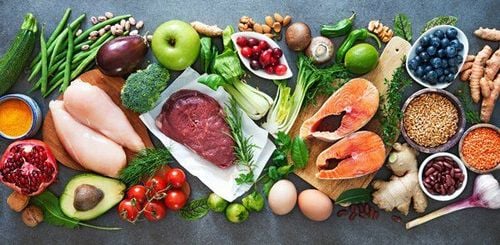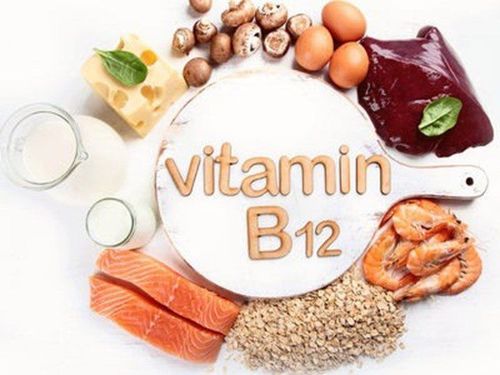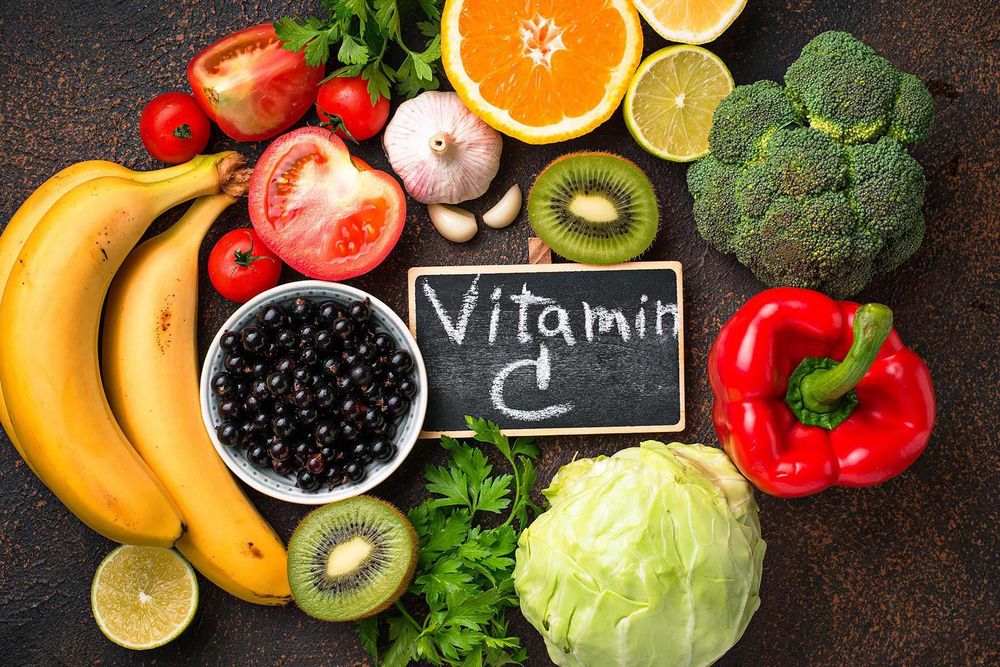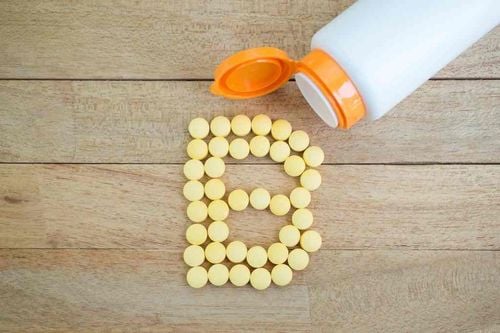This is an automatically translated article.
Vitamins are divided into several different categories, with the two main groups being water-soluble and fat-soluble vitamins. Each vitamin will play a different role and function in human health. A deficiency in these vitamins can cause serious medical problems.1. How are vitamins classified?
Generally, vitamins are classified based on their solubility. Most of the most common vitamins that we use every day are water-soluble vitamins. In addition, another group of vitamins that make up lesser amounts are fat-soluble vitamins. They include only four vitamins, which are fat-soluble, also known as liquid fats.Below is a list of 9 water-soluble vitamins that not only play a very important role in health, but are also very common in the human daily diet, including: :
Vitamin B1 (thiamine) Vitamin B2 (riboflavin) Vitamin B3 (niacin) Vitamin B5 (pantothenic acid) Vitamin B6 Vitamin B7 (biotin) Vitamin B9 Vitamin B12 (cobalamin) Vitamin C In general, water-soluble vitamins are evenly distributed cannot be stored inside the body, so you need to get them through foods in your daily diet.

Nhìn chung, các loại vitamin hòa tan trong nước đều không thể lưu trữ bên trong cơ thể, do đó bạn cần phải bổ sung chúng thông qua các loại thực phẩm trong chế độ ăn uống hàng ngày của mình
2. Water-soluble vitamins
2.1 Vitamin B1 (Thiamine) Vitamin B1, also known as Thiamine. This water-soluble vitamin can exist in many different forms, including:Thiamine pyrophosphate: The most abundant form of vitamin B1 in the body, also known as thiamine pyrophosphate or thiamine diphosphate. In addition, this form of thiamine is also the main form found in whole foods. Thiamine triphosphate: Usually abundant in foods of animal origin, however, its abundance and abundance is lower than that of the thiamine pyrophosphate form. This form of thiamine also accounts for less than 10% of the total thiamine found in animal tissues. Thiamine hydrochloride: A synthetic form of vitamin B1, commonly used in supplements. Thiamine mononitrate: A synthetic form of thiamine, often added to processed foods or animal feed. Role and function of vitamin B1: Similar to other B vitamins, vitamin B1 holds the main function of being an active coenzyme in the body. These small coenzyme compounds work to trigger chemical reactions through enzymes. In general, vitamin B1 is an extremely important substance for the body, participating in many important chemical reactions, such as converting nutrients into energy or assisting in the formation of sugar.
Food sources rich in Thiamine: You can get vitamin B1 (thiamine) through foods like whole grains, nuts, pork or animal liver. However, thiamine is not usually found in many fruits, vegetables or dairy products.
Recommended Daily Intakes for vitamin B1 (RDA):
The following are health care professionals' recommendations for daily vitamin B1 intake for certain age groups, including:
*Infants:
From 0 to 6 months old: 0.2 mg/day. From 7 to 12 months old: 0.3 mg/day. *Children:
From 1 to 3 years old: 0.5 mg/day From 4 to 8 years old: 0.6 mg/day From 9 to 13 years old: 0.9 mg/day *Women:
From 14 to 18 years old age: 1.0 mg/day 19 years old and older: 1.1 mg/day *Men: 14 years old and older: 1.2 mg/day
*Pregnant and nursing women: 1.4 mg/day.
Vitamin B1 deficiency: Usually rare, however, people with high blood sugar can increase the excretion of vitamin B1 in the urine, thereby leading to the risk of important nutrient deficiencies. this weight. Research has also shown that, in people with diabetes (both types 1 and 2) there can be up to 75% reduction in thiamine levels in the body.
Besides, people with alcoholism are also at high risk of vitamin B deficiency due to the body's impaired ability to absorb thiamine and poor nutrition.
Severe vitamin B1 deficiency can lead to disorders, such as Wernicke-Korsakoff syndrome and Beriberi syndrome. These syndromes often have typical signs, including impaired neurological function, loss of appetite, mental problems, weight loss, enlarged heart, and muscle weakness.

Những người bị nghiện rượu cũng có nguy cơ cao bị thiếu hụt loại vitamin B1
During digestion, flavoproteins release riboflavin. Among them, two are the most common flavoproteins, found in many foods, including flavin mononucleotide and flavin adenine dinucleotide.
Roles and functions of vitamin B2: This vitamin also acts as a coenzyme, participating in different types of chemical reactions in the body. Similar to vitamin B1, it also helps convert nutrients into energy. In addition, it also plays an essential role in converting tryptophan to niacin (vitamin B3) and vitamin B6 to the active form.
Food sources of vitamin B2: This water-soluble vitamin is commonly found in foods such as leafy vegetables, legumes, broccoli, mushrooms, milk, eggs and meat. In addition, yeast extract is also rich in vitamin B2, containing about 18mg per 100g. Besides, people also use this vitamin to eat with breakfast cereals or use to make food orange yellow.
Recommended daily intake for vitamin B2: Here are age-specific amounts of vitamin B2:
*Infants:
7 - 12 months old: 0.4 mg/day 0 - 6 months age: 0.3 mg/day *Children:
From 1 to 3 years old: 0.5 mg/day From 4 to 8 years old: 0.6 mg/day From 9 to 13 years old: 0.9 mg/day * Women:
From 14 to 18 years old: 1.0 mg/day 19 years old and up: 1.1 mg/day *Men: over 14 years old: 1.3 mg/day
*Pregnant women: 1 ,4 mg/day
*Breastfeeding women: 1.6 mg/day
Vitamin B2 deficiency: Factors including lung disease, poor diet, old age or alcoholism may increase risk of vitamin B2 deficiency. When the body is severely deficient in this vitamin, it leads to ariboflavinosis, often with characteristic symptoms such as glossitis, sore throat, anemia, and other eye and skin problems. In addition, vitamin B2 deficiency also significantly affects the conversion of tryptophan to niacin, as well as the metabolism of vitamin B2 in the body.

Những người thiếu hụt vitamin B2 thường có triệu chứng đau họng, viêm lưỡi,...
Nicotinic acid: found in many foods of animal and plant origin. This is also the most common form in supplements. However, when the body gets too much nicotinic acid, it can lead to niacin-induced flushing. Nicotinamide (niacinamide): Found in some foods and supplements. Role and function of vitamin B3: Most forms of vitamin B3 will be metabolized to nicotinamide adenine dinucleotide phosphate (NADP +) or nicotinamide adenine dinucleotide (NAD +). It functions as a coenzyme in the body and acts as an antioxidant.
One of the most important functions of vitamin B3 is to promote glycolysis, extracting energy from glucose.
Food sources of vitamin B3: You can get this vitamin through both animal and plant food sources. Some studies have shown that, in yeast extract, there are about 128 mg of vitamin B3. In addition, it is also found abundantly in chicken, eggs, fish, mushrooms and dairy products.
Recommended daily intake for vitamin B3: Specifically:
*Infants: 0 – 12 months old: 2 – 4 mg/day
*Children:
1 – 3 years old: 6 mg/ day From 4 to 8 years old: 8 mg/day From 9 to 13 years old: 12 mg/day *Women: 14 years old and older: 14 mg/day
*Men: over 14 years old: 16 mg/day
* Pregnant women: 18 mg/day
*Breastfeeding women: 17 mg/day
Vitamin B3 deficiency: A deficiency of vitamin B3 can lead to Pellagra, including symptoms such as mouth sores, dermatitis, insomnia, diarrhea and dementia. If not treated promptly, Pellagra can be fatal.
2.4. Vitamin B5 (Pantothenic Acid) You can easily find vitamin B5 in most foods. This vitamin can exist in many different forms, including:
Coenzyme A: Has the effect of releasing pantothenic acid in the digestive tract. A-acyl carrier protein: Similar to coenzyme A Calcium pantothenate: The most common form of vitamin B5 in supplements Panthenol: Used primarily in supplements Vitamin B5 role and function: This B vitamin has an indispensable role in the metabolic processes of the body. It is involved in the synthesis of amino acids, fatty acids, neurotransmitters, steroid hormones, and the formation of coenzyme A.
Food sources of vitamin B5: Food sources of pantothenic acid usually include Includes shiitake, yeast extract, chicken, caviar, egg yolk, kidney and beef. In addition, it is also abundant in vegetables, tomatoes, whole grains and broccoli.
Recommended daily intake for vitamin B5: *Infants:
0 - 6 months old: 1.7 mg/day 7 - 12 months old: 1.8 mg/day *Children:
From 1 - 3 years old: 2 mg/day 4 - 8 years old: 3 mg/day 9 - 13 years old: 4 mg/day *Adolescents: 14 - 18 years old: 5 mg/day.
*Adults: 19 years and older: 5 mg/day
*Pregnant women: 6 mg/day
*Breastfeeding women: 7 mg/day
Vitamin B5 deficiency: People with People with diabetes or alcohol abuse are at higher risk of developing a vitamin B5 deficiency because their body's need for this vitamin tends to be higher than that of the average person. A severe deficiency of vitamin B5 can adversely affect almost any organ system in the body. It can lead to symptoms like sleep disturbances, numbness, restlessness, irritability, and digestive problems.

Thiếu hụt vitamin B5 có thể gây rối loạn giấc ngủ
Pyridoxine: Found in vegetables, fruits, whole grains, supplements or some processed foods. Pyridoxamine: Found in many foods of animal origin. Currently, it is used as an FDA-approved pharmaceutical drug. Pyridoxal: Found in many foods of animal origin. Roles and functions of vitamin B6: Acts as a coenzyme, participating in a variety of chemical reactions. This is an essential substance for amino acid metabolism, energy, red blood cell formation and sugar release. In addition, vitamin B6 also helps the body synthesize certain neurotransmitters and aids in the formation of white blood cells.
Food sources rich in vitamin B6: Includes pork, tuna, turkey, potatoes, bananas and chickpeas. You can take vitamin B6 with breakfast cereals or soy-based meat substitutes.
Recommended daily intake for vitamin B6: *Infants: 0-12 months old: 0.1-0.3 mg/day.
*Children: From 1 to 13 years old: 0.5 - 1.0 mg/day
*Women:
11 - 50 years old: 1.2 - 1.3 mg/day Over 51 years old: 1.5 mg/day *Men:
From 14 to 50 years old: 1.3 mg/day Over 51 years old: 1.7 mg/day *Pregnant women: 1.9 mg/day
*Breastfeeding women: 2.0 mg/day
Vitamin B6 deficiency: Alcoholics are at the highest risk for this vitamin deficiency. The main symptoms of vitamin B6 deficiency include skin rashes, anemia, confusion, seizures, and depression. In addition, it can also increase the risk of cancer.
2.6.Vitamin B7 (Biotin) Vitamin B7 is commonly used to nourish and care for hair, nails and skin. It can exist free or bound to proteins.
Role and function of vitamin B7: It functions as a coenzyme, playing an essential role in glucose formation, fatty acid synthesis and amino acid metabolism.
Food sources of vitamin B7: Animal foods are rich in vitamin B7, including fish, meat, organ meats, dairy products, and egg yolks. Meanwhile, plant sources rich in this vitamin, include green vegetables, beans, mushrooms, cauliflower and nuts.
Recommended daily intake for vitamin B7: Infants: 0 - 12 months: 5 - 6 mcg/day Children: 1 - 13 years: 8 - 20 mcg/day Teenagers: 14 – 18 years: 25 mcg/day Adults: 19 years and older: 30 mcg/day Pregnant women: 30 mcg/day Lactating women: 35 mcg/day Vitamin B7 deficiency: Risk of deficiency Vitamin B7 deficiency is highest in people taking anti-epileptic drugs, babies fed formulas low in biotin, or babies with Leiner's disease. Untreated vitamin B7 deficiency can lead to neurological symptoms such as intellectual disability, seizures, and loss of muscle coordination.

Sự thiếu hụt vitamin B7 nếu không được điều trị có thể dẫn đến những triệu chứng thần kinh như thiểu năng trí tuệ, co giật và mất sự phối hợp cơ
Folate: Found naturally in foods Folic acid: A synthetic vitamin B9, often added to processed foods. However, taking folic acid supplements in high doses can be harmful to health. L-methylfolate: The active form of vitamin B9 in the body, considered a healthier supplement than folic acid. Roles and functions of vitamin B9: It is extremely important for the formation of DNA, red blood cells, white blood cells, cell growth and amino acid metabolism. Since it is very important during times of rapid cell division and growth, it is considered an indispensable substance for pregnant women and infants.
Food sources rich in vitamin B9: Including legumes, green vegetables, sunflower seeds, yeast extract and asparagus.
Recommended daily intake for vitamin B9: Infants: 0 - 12 months old: 65 - 80 mcg/day Children: 1 - 18 years old: 150 - 400 mcg/day Adults: 19 years old or more: 400 mcg/day Pregnant women: 600 mcg/day Lactating women: 500 mcg/day Vitamin B9 deficiency: A vitamin B9 deficiency is often associated with a poor diet and deficiency deficiencies in other important nutrients. It can lead to anemia and neural tube defects.
2.8.Vitamin B12 (Cobalamin) Is the only vitamin that contains the metal element cobalamin. It consists of 4 main types: Hydroxocobalamin, cyanocobalamin, methylcobalamin and adenosylcobalamin. Most of these types of vitamin B12 are found in many supplements and in small amounts in foods.
Role and function of vitamin B12: Similar to other B vitamins, vitamin B12 also functions as a coenzyme, helps brain development, participates in red blood cell production and nerve functions. other. It is also essential for the conversion of fats into energy and for cell division and DNA synthesis.
Food sources rich in vitamin B12: Foods of animal origin are rich in vitamin B12, including dairy products, eggs, seafood, meat, liver, heart, oysters, octopus, tuna or other foods. quote. In addition, it is also present in small amounts in some algae, such as spirulina.

Một số loại thực phẩm giàu vitamin B12 có thể kể đến như cá ngừ, sản phẩm từ sữa, hải sản,...
2.9.Vitamin C This is the only water-soluble vitamin that is not part of the vitamin B group. It is considered one of the most important antioxidants in the body and is essential for collagen synthesis. Vitamin C usually exists in two main forms, the most common being ascorbic acid.
Roles and functions of vitamin C include: Forming collagen: Your body will not be able to synthesize collagen without vitamin C. This deficiency can greatly affect tendons, skin, bones and ligaments. your ligaments. Antioxidant: Vitamin C is a powerful antioxidant that helps the body defend itself against oxidative stress. Immune function: In fact, immune cells in the body contain large amounts of vitamin C, which helps fight infections. Food sources of vitamin C: The main sources of vitamin C in your daily diet are vegetables and fruits, such as kiwi, kale or guava. Only small amounts of vitamin C are found in eggs, raw liver, fish, fish eggs and meat.

Các loại thực phẩm giàu vitamin C
*Children: 1-13 years old: 15-45 mg/day
*Women :
14 - 18 years old: 65 mg/day 19 years old and older: 75 mg/day *Men:
14-18 years old: 75 mg/day 19 years old and older: 90 mg/day *Women: Pregnancy: 80 – 85 mg/day
*Law-feeding women: 115 – 120 mg/day
Vitamin C deficiency: May occur in people who do not eat a lot of fruits and vegetables in their diet daily eating. In addition, people who are addicted to alcohol or drugs are also at high risk for vitamin C deficiency.
When the body is severely deficient in this nutrient, it can lead to Sco-pen disease, with symptoms such as fatigue, weakness, gingivitis, skin spots, bleeding gums, tooth loss, dry eyes, joint problems and difficulty healing wounds. If not treated promptly, Sco-pen disease caused by vitamin C deficiency can lead to death.
Please dial HOTLINE for more information or register for an appointment HERE. Download MyVinmec app to make appointments faster and to manage your bookings easily.
Reference source: healthline.com












